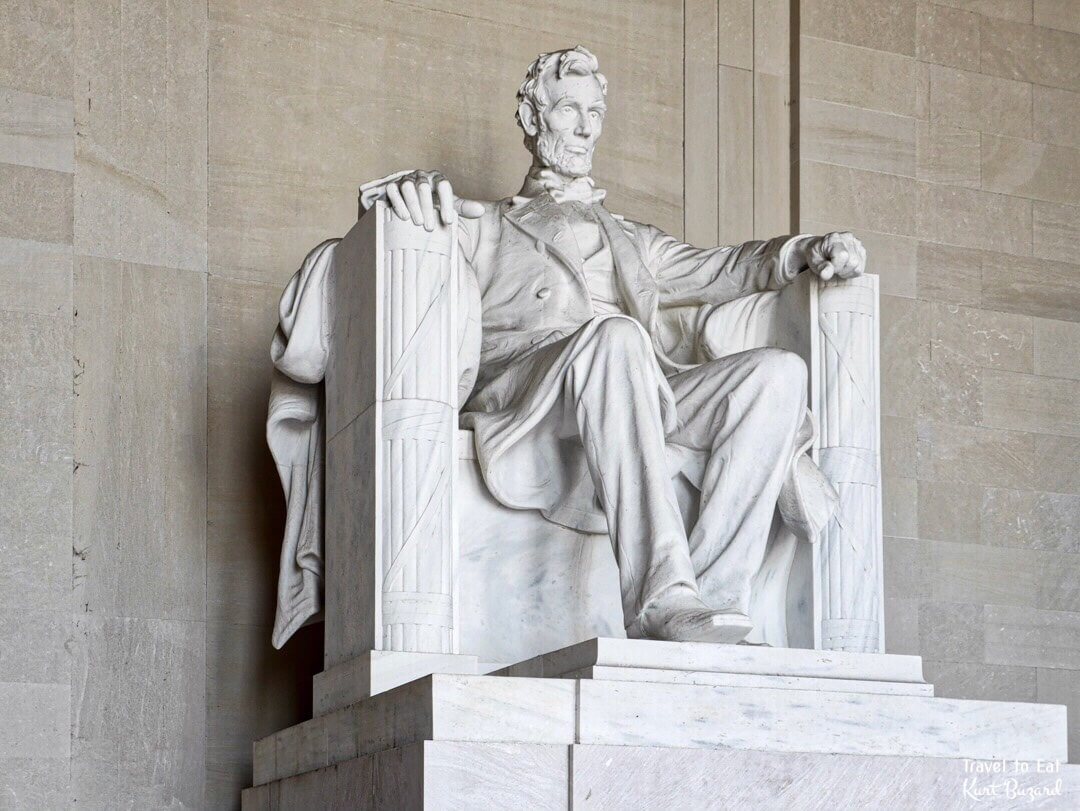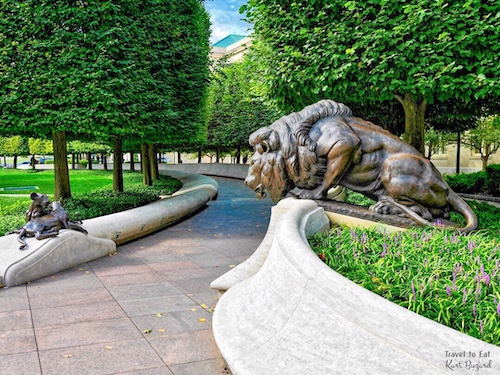
Since I visited Washington DC a couple of years ago, I collected a number of photographs of iconic Washington buildings and memorials. While my collection might not be the typical sights, I thought I would share them here. I would hope in this time of deep divisions in the country, these images of Washington DC will remind us of our common heritage. I am aware that many important memorials are not recognized and recorded, these are my memories of our country’s capital.
National Law Enforcement Memorial

Designed by architect Davis Buckley, the memorial features a reflecting pool which is surrounded by walkways on a 3-acre (12,000 m2) park. Along the walkways are walls that are inscribed with names of all U.S. law enforcement officers, federal, state, and local, who have died in the line of duty. Bordering the Memorial’s beautifully landscaped park are the two tree-lined “pathways of remembrance” where the names of the fallen officers are engraved. Each of the pathway entrances is adorned with a powerful statuary grouping of an adult lion protecting its cubs. Sculpted by Raymond Kaskey, the bronze statues symbolize the protective role of law enforcement officers and convey the strength, courage and valor that are hallmarks of those who serve and protect.
Planters
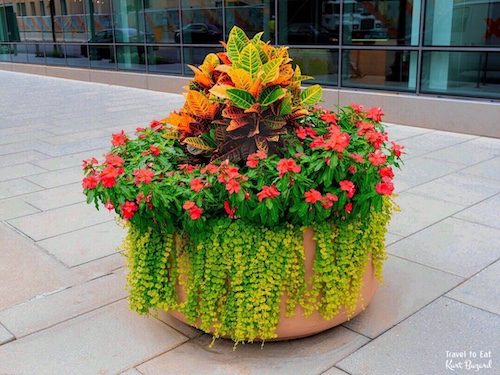
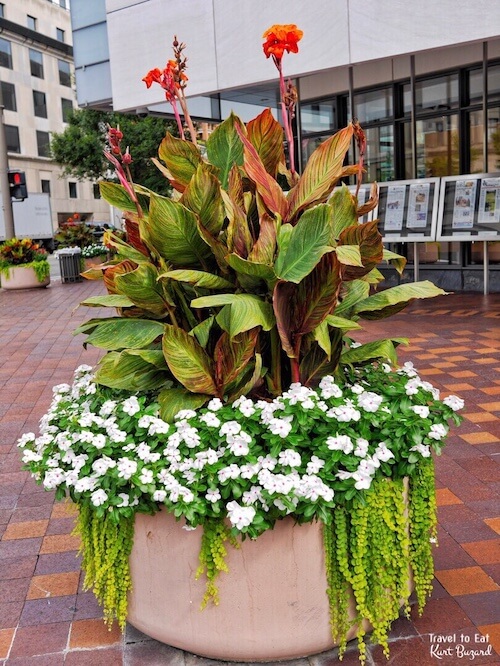
Due to the relatively southern location, the vegetation is beautiful and lush. The planters located around the city are ample evidence of this abundance.
White House
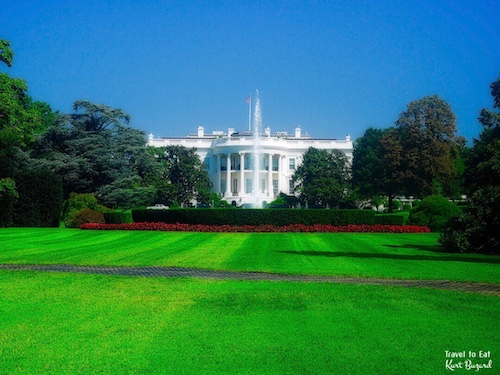
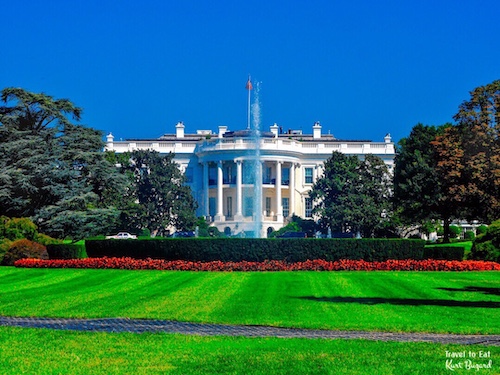
No collection of Washington photos would be complete without a couple of shots of the White House shot from the Ellipse just south of Presidents Park. The landscape surrounding the White House is particularly well groomed and beautiful.
First Division Monument

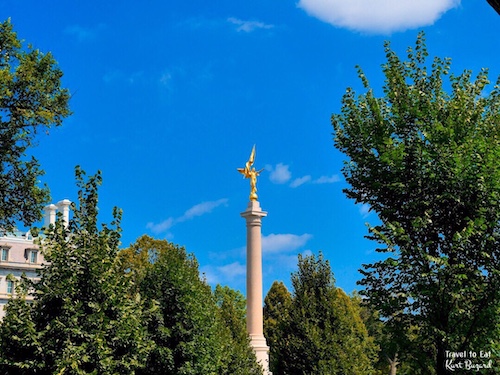
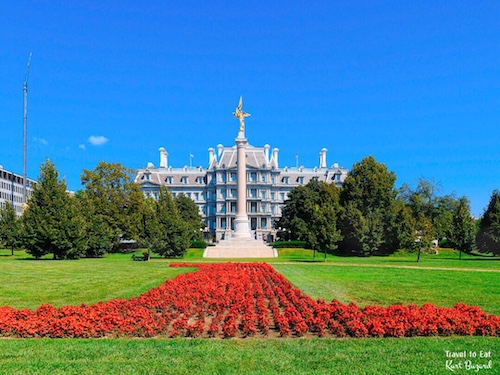
The Eisenhower Executive Office Building (EEOB), formerly known as the Old Executive Office Building (OEOB) and even earlier as the State, War, and Navy Building, is a U.S. government building situated just west of the White House built between 1871 and 1888. It is occupied by the Executive Office of the President, including the Office of the Vice President of the United States. The pillar in front is the First Division Monument, built to honor the valiant efforts of the soldiers who fought in World War I. Later additions to the monument commemorate the lives of First Division soldiers who fought in subsequent wars. The World War II addition on the west side was dedicated in 1957, the Vietnam War addition on the east side in 1977, and the Desert Storm plaque in 1995. Cass Gilbert was the architect of the original memorial and Daniel Chester French was the sculptor of the Victory statue.
Constitution Hall
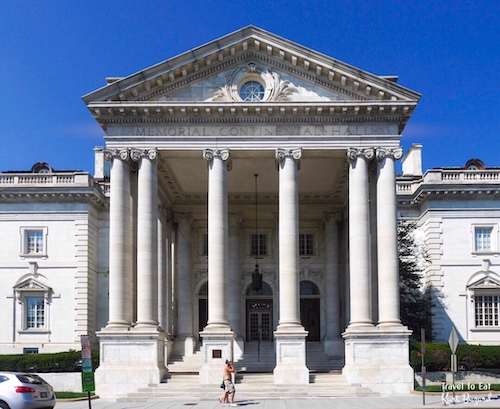
Ground was broken for the Daughters of the American Revolution, Constitution Hall on June 22, 1928. The cornerstone was laid by Mrs. Calvin Coolidge on October 30, 1928, using the trowel George Washington used to lay the cornerstone at the Capitol in 1793. Mrs. Herbert Hoover was the guest speaker at the formal dedication on April 19, 1929. The first musical event in the hall was on November 2, 1929 and featured Anna Case, Efrem Zimbalist, Sophie Braslau, and Hans Barth.
American Red Cross
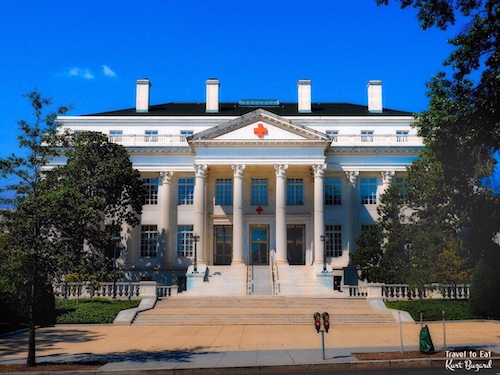
The national headquarters of the American Red Cross is located in central Washington, on the east side of a city block bounded by 17th, 18th, D, and E Streets NW. This block, on the west side of The Ellipse south of the White House, is entirely devoted to Red Cross facilities. The main headquarters building is a large stone structure, faced in white Vermont marble. It is three stories in height, its third floor recessed behind a balustrade. Its east-facing main facade has a central classical temple portico, with six Corinthian columns supporting a gabled pediment with a red cross at the center. Built between 1915 and 1917, it was declared a National Historic Landmark in 1965.
Supreme Court Building
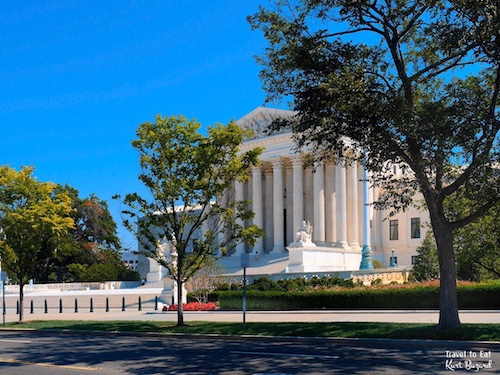
The Supreme Court Building is located across the street from the United States Capitol and was designed by architect Cass Gilbert. It rises four stories (92 ft (28 m)) above ground. The cornerstone was laid on October 13, 1932, and construction completed in 1935. On either side of the main steps are seated marble figures. These large statues are the work of sculptor James Earle Fraser. On the left is a female figure, the Contemplation of Justice. On the right is a male figure, the Guardian or Authority of Law.
Lincoln Memorial



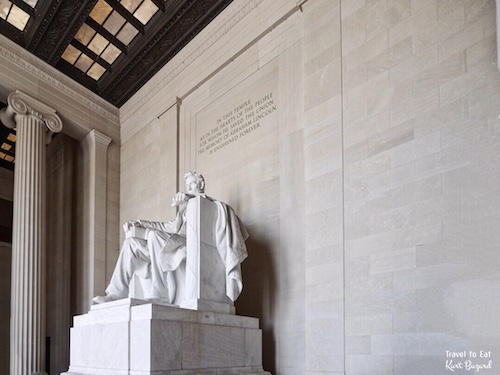
I was surprisingly moved by the Lincoln Memorial, a popular gathering spot in Washington DC. Henry Bacon was the New York architect who designed the Lincoln Memorial, which stands at the west end of the National Mall as a neoclassical tribute to the 16th President of the United States. The construction of the memorial took eight years to complete, from 1914-1922. Bacon insisted on using a variety of stones in the construction of the memorial. The granite at the terrace level came from Massachusetts, the marble of the upper steps and outside façade came from Colorado, while the pink marble floor of the chamber came from Tennessee. One will notice the Indiana limestone on the interior walls and columns of the chamber, and the Alabama marble used for the ceiling tiles (soaked in paraffin to give them a translucent appearance). The north and south chambers display carved inscriptions of Lincoln’s second inaugural address and his Gettysburg Address. Bordering these inscriptions are pilasters ornamented with fasces, eagles, and wreaths.
Lincoln Memorial Statue
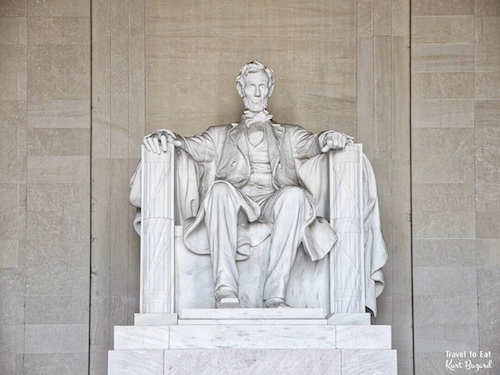
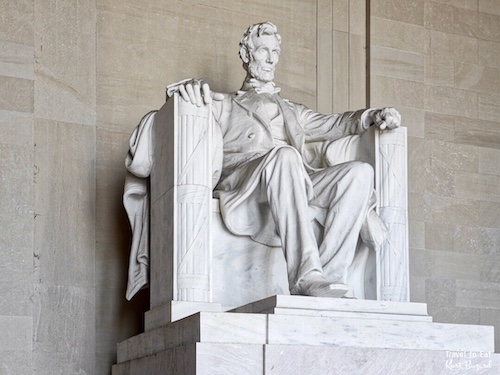
The nineteen-foot tall statue of Abraham Lincoln emerged from the design of Massachusetts sculptor Daniel Chester French whose attention to detail, accuracy, and composition created a masterpiece. French devoted considerable effort toward depicting Lincoln during the midst of war. He viewed photographs, read eyewitness descriptions, and studied Leonard Volk’s 1860 castings of Lincoln’s hands, then sculpted several models until he rendered a perfected final product. The statue of Lincoln was carved from Georgia marble. These stones from several parts of the United States, symbolize the importance of the Union to Lincoln.
Washington Memorial
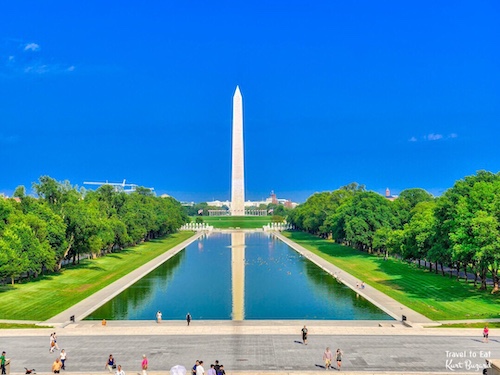
The Washington Monument is an obelisk on the National Mall in Washington, D.C., built to commemorate George Washington, once commander-in-chief of the Continental Army and the first President of the United States. Construction of the monument began in 1848, and was halted from 1854 to 1877 due to a lack of funds, a struggle for control over the Washington National Monument Society, and the intervention of the American Civil War. Although the stone structure was completed in 1884, internal ironwork, the knoll, and other finishing touches were not completed until 1888. A difference in shading of the marble, visible approximately 150 feet (46 m) or 27% up, shows where construction was halted and later resumed with marble from a different source.
The Statue of Freedom
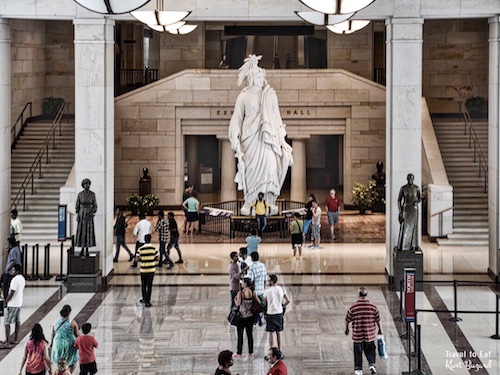
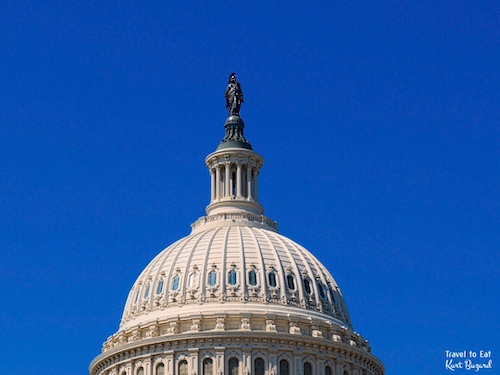
The Statue of Freedom also known as Armed Freedom or simply Freedom is a bronze statue designed by Thomas Crawford (1814–1857) that, since 1863, has crowned the dome of the U.S. Capitol in Washington DC. The Statue of Freedom plaster model remained on view in the Russell basement rotunda until 2008 when the opening of the Capitol Visitor Center provided a space where visitors could truly appreciate it. It is now the centerpiece of Emancipation Hall (above), and visitors can see details of the model that would be impossible for them to see from the ground looking up at the bronze statue atop the Capitol.
As always, I hope you enjoyed the post, please leave a comment.
[mappress mapid=”224″]
References:
First Division Monument: https://www.nps.gov/whho/learn/historyculture/first-division-monument.htm
Constitution Hall: http://www.dar.org/constitution-hall/constitution-hall-history
Red Cross: http://www.redcross.org/local/washington-dc
Lincoln Memorial: https://www.nps.gov/linc/index.htm
Washington Monument: https://www.nps.gov/wamo/index.htm
Statue of Freedom: https://www.aoc.gov/art/other-statues/statue-freedom
Sent from my iPad

